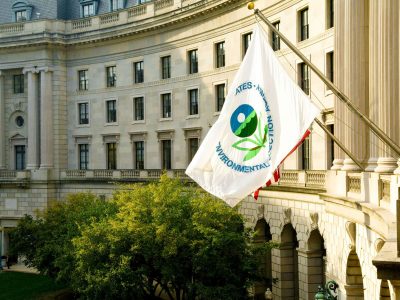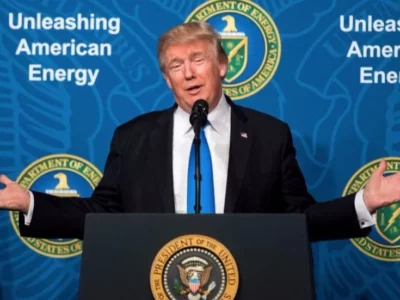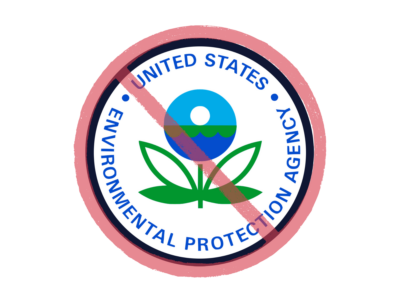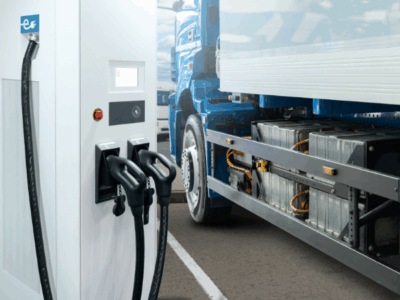Air Quality
Gas Price Politics and Desperate Moderates
The Drain is a weekly roundup of environmental and climate news from Legal Planet.
In 18 years of working in newsrooms around Los Angeles, I talked with lots of political campaigns — but a phone call from Antonio Villaraigosa in spring of 2018 stands out. I was at my desk in the cramped newsroom of KCRW, sitting in between All Things Considered host Steve Chiotakis and producer Ben Gottlieb, …
Continue reading “Gas Price Politics and Desperate Moderates”
CONTINUE READINGWhat Happened to EPA Enforcement?
Enforcement efforts peaked long ago and have been in long-term decline. Trump will accelerate that.
There has been a long-term decline in EPA enforcement since the late Bush Administration. The numbers raise three questions: What’s behind the long-term trend? Why has pollution generally continued to decline despite weaker enforcement? And how bad will things be under Trump II? As to the third question, Trump has already made it clear that we can expect environmental enforcement to crash and burn in the next four years.
CONTINUE READINGExecutive Disorders
One after another, Trump has let loose destructive blasts at the environment to promote fossil fuels, mining, and logging.
We all know that Trump has issued a slew of executive orders since taking the oath of office. We also know that many of these are aimed to promoting fossil fuels, mining, and logging at the expense of the environment, while disfavoring renewable energy. Still, it’s impressive when you put the list together to see the full onslaught.
CONTINUE READINGEPA Steps Through the Looking Glass
You can’t accuse EPA of hiding the ball. It has announced its new mission: promoting fossil fuels.
You might have thought the prime mission of the Environmental Protection Agency was protecting the environment. Lee Zeldin, the Trump appointee running EPA, has a different idea: “The EPA is going to aggressively pursue an agenda powering the Great American Comeback… that’s our purpose, and it’s what will keep us up at night.”
CONTINUE READINGModernizing Air Permitting in California
Guest Contributor Craig Segall writes that SB 318 would help clean up factories and other big industrial sources by pulling permitting practices into this century.
Almost every major industrial and power facility in California needs an air permit when it’s built or renovated. That’s a huge opportunity to rapidly advance the zero and near-zero technologies that Congress invested in in the Inflation Reduction Act, and that we urgently need to meet ever-more-pressing air quality challenges, especially as attacks from the …
Continue reading “Modernizing Air Permitting in California”
CONTINUE READINGDoes Deregulation Hypercharge the Economy?
If the economics effects are that huge, you’d expect the unemployment rate reflect major regulatory or deregulatory moves. It doesn’t.
EPA’s head sats that “EPA will be reconsidering many suffocating rules that restrict nearly every sector of our economy and cost Americans trillions of dollars.” If regulation and deregulation are that big a deal economically, we should clearly see their imprint on unemployment. It turns out that even the biggest regulatory and most dramatic deregulatory actions have no discernible effect on the job market.
CONTINUE READING100 Days of Fear & Loathing in Climate World
The Drain is a weekly roundup of climate and environmental news from Legal Planet.
Are you tired of the words “100 days”? “In his first 100 days the Trump administration has slashed federal agencies, canceled national reports, and yanked funding from universities,” Grist puts it. “One hundred days of anti-environmental mayhem,” says Dan Farber at Legal Planet. My UCLA colleague Ann Carlson is quoted by the New York Times …
Continue reading “100 Days of Fear & Loathing in Climate World”
CONTINUE READINGUnsheathing a Weapon for Clean Air: ISRs
New UCLA Law report focuses on how to use Indirect Source Rules to fight pollution from mega facilities.
We don’t have to tell you that air pollution remains a serious threat to communities across California, from Oakland to the Inland Empire. But what if we told you that most air regulators are fighting air pollution with one hand tied behind their back, unnecessarily? It turns out there is a powerful weapon that can …
Continue reading “Unsheathing a Weapon for Clean Air: ISRs”
CONTINUE READING“What We Do Matters:” UCLA’s Charging Ahead Symposium
States and cities have a lot of tools to cut vehicle pollution. It’s time to break them out.
Trump is a bump. A nasty one, but a bump nonetheless, because the world is on the road to zero-emission fuels and vehicles no matter what. That was one takeaway from “Charging Ahead,” the UCLA Emmett Institute’s annual symposium held on April 9 — devoted this year to cutting vehicle pollution during the next four …
Continue reading ““What We Do Matters:” UCLA’s Charging Ahead Symposium”
CONTINUE READINGHunting Methane Using Satellites
Joint UC Berkeley – UCLA Law report aims to help policymakers harness the methane data revolution.
A stream of data about methane—a potent greenhouse gas—is now constantly being beamed down from space. New methane satellites provide a powerful data capability for governments who want to demonstrate leadership in climate policy. To equip policymakers with necessary information on satellite methane data, UC Berkeley Law’s Center for Law, Energy and the Environment (CLEE), …
Continue reading “Hunting Methane Using Satellites”
CONTINUE READING












